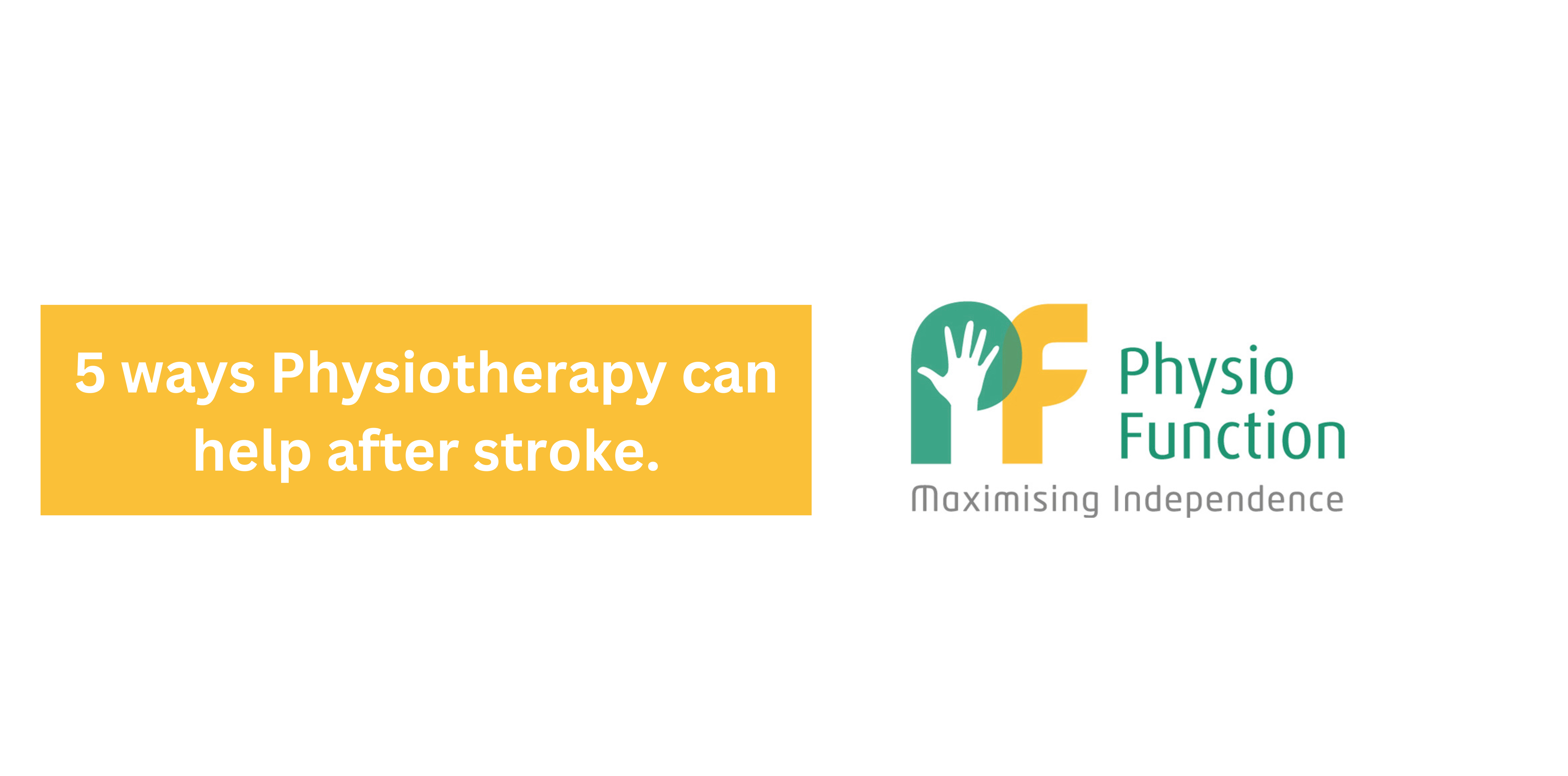5 ways Physiotherapy Can Help After Stroke
A Stroke occurs when a part of your brain is starved of oxygen, usually caused by a blockage in the blood vessels (known as an ischemic stroke) or a bleed (known as a haemorrhagic stroke). You will experience symptoms predominantly on the opposite side of your body to where the damage occurred, leading to muscle weakness, spasms, changes in sensation, and loss of function, as well as more central symptoms including difficulties with communication, cognition (thinking, reasoning) and fatigue.
You will be offered a range of therapies from different healthcare professionals to support and optimise your rehabilitation. This blog focuses on 5 ways that Physiotherapy can help after a stroke.
1. Stroke Physiotherapy gets you stronger
A central component of Physiotherapy is the completion of strengthening exercises, specifically targeting the muscles that have been affected by a stroke. This kind of therapy will usually take the form of resistance exercises. The required resistance will depend on how strong the muscles are, but it needs to be sufficient to cause the muscles to work harder than usual, to cause ‘overload’ and changes to occur within the muscle. As strength increases, so must the resistance to ensure that overload continues by performing progressive resistance exercise. This is important because many daily activities, such as standing up for a chair or climbing down the stairs, require strong muscles.
2. Stroke Physiotherapy gets you fitter
In addition to resistance exercises, Physiotherapy treatment includes aerobic or cardiovascular exercises, such as swimming, cycling, walking or running. These activities are intended to target your heart and circulatory system, improving the efficiency of how the brain and body receive the oxygen the need to operate. This is important following stroke as movements and activities that were easy and taken for granted before, become more challenging and use more energy. By improving your fitness, you build more reserves to combat this increased energy requirement and will be able to do more with less fatigue.
3. Stroke Physiotherapy helps your balance
After a stroke it is common for your sense of balance to be altered. This can be due to difficulties with your vision, your inner ear, and/or your proprioception – the ability of the brain to determine where the body is in space. These three systems work together to keep us upright and balanced on our feet when walking. A Physiotherapist will assess your balance and provide you with a range of activities that you can perform to improve it. In some cases, the addition of a walking aid, such as a stick or walking frame, is necessary to enable you to safely move around on your feet, and other aids including functional electrical stimulation or orthotics may be needed to ensure that your feet and legs stay in the right position to enable to you balance and walk safely.
4. Stroke Physiotherapy boosts your confidence
By training your body to be stronger, fitter and better balanced after a stroke, you will feel more confident when standing up and moving around at home, in the community and at work. It is well known that a fear of falling is a significant risk factor in the occurrence of falling, so by improving your confidence through physiotherapy exercises such that you are less concerned over falling over during activities, you dramatically reduce the risk of doing so. This also makes you more likely to engage in community and social activities which will help with your mental health and wellbeing.
5. Stroke Physiotherapy helps you return to the things you love
Due to the symptoms that you may experience after a stroke, returning to things you enjoyed before, such as gardening, socialising with friends, cycling or walking on mountains may feel an impossible task. Working with a Physiotherapist can help you improve your physical capabilities to, in many cases, return to the same activities that you did before. However, in some cases, engaging in the same activities in the same way, is too effortful, to difficult or unsafe to be enjoyable. In this instance a Physiotherapist can work with you to find different ways of completing activities so that you can still do the things you love to do.
Are you looking for Stroke rehabilitation? We can help! Contact us today.
